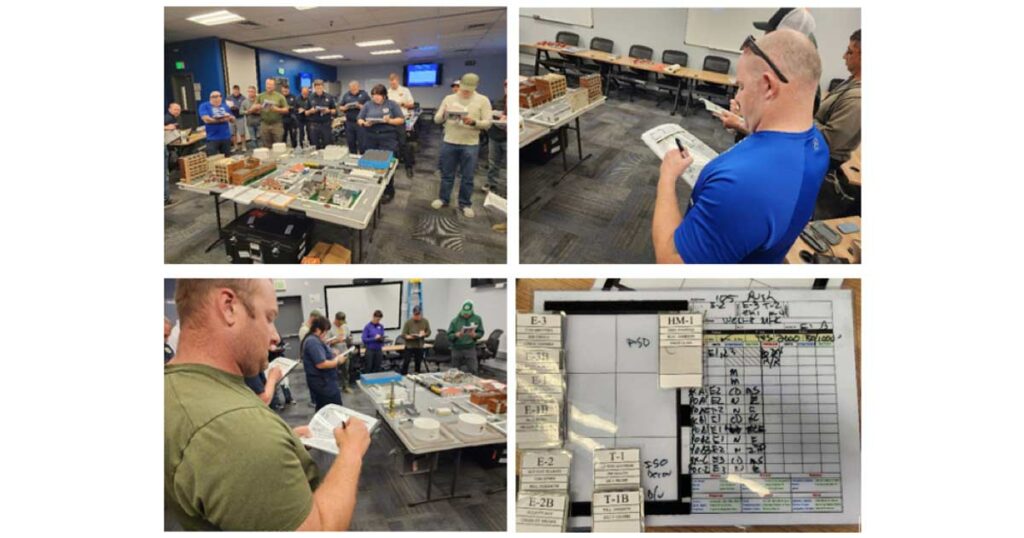Hazmat Training Debrief will give you a quick recap of interesting hazmat training going on. This week we look at a recent on-scene hazardous materials incident commander class conducted by InSource Fire Service Training and Consulting for the Yakima Fire Department.
What agency led the training?
City of Yakima Fire Department / Washington State Fire Marshal’s Office.
Where was it held?
Yakima Emergency Management Office.
What was the set-up time?
About an hour and a half.
How many were trained?
25.
What hazmat levels were the trainees?
Operations and Technician.
What were the training objectives?
First, to improve the students’ ability to analyze hazardous materials incidents to determine the extent of the problems, to make a prediction about the outcome of the event and to develop an appropriate risk-benefit. Second, to help them to develop appropriate response objectives and action options and to develop a written incident action plan. Third, to implement a planned response to favorably change the outcome of the incident consistent with the risk-benefit analysis. Fourth, to evaluate progress to ensure response objectives are being accomplished safely, efficiently and effectively.
What evolutions did trainees do?
Ten video-driven exercises on developing a risk-benefit analysis. Five video-driven exercises on determining incident problems with a risk benefit. The students did these seven tabletop exercises on developing a written incident action plan.
1. Non-pressure railcar incident leaking kerosene from the valve.

2. Cryogenic liquid release (MC-338) (CO2) at a fast-food restaurant.

3. Non-pressure facility tank and a DOT 407 with pesticide (chloropicrin) at a farm and feed store.

4. DOT 406 with ethanol on fire in an urban area.

5. Intermodal container (methyl isocyanate) leaking valve, with contaminated patient.

6. DOT 406 vs. car with gasoline spill.

7. Refrigeration warehouse with anhydrous ammonia release with 2 missing employees.

What technology was used?
Tabletop diorama, video driven exercises.
What were the biggest successes?
Twenty-five members from 10 organizations developed a common site picture to greatly improve their ability to manage hazardous materials incidents on an interagency basis, to use resources more efficiently and to improve the level of safety of response personnel.
What would you do differently next time?
We would love to be able to allow students to practice the principles given in the class over more incidents.

